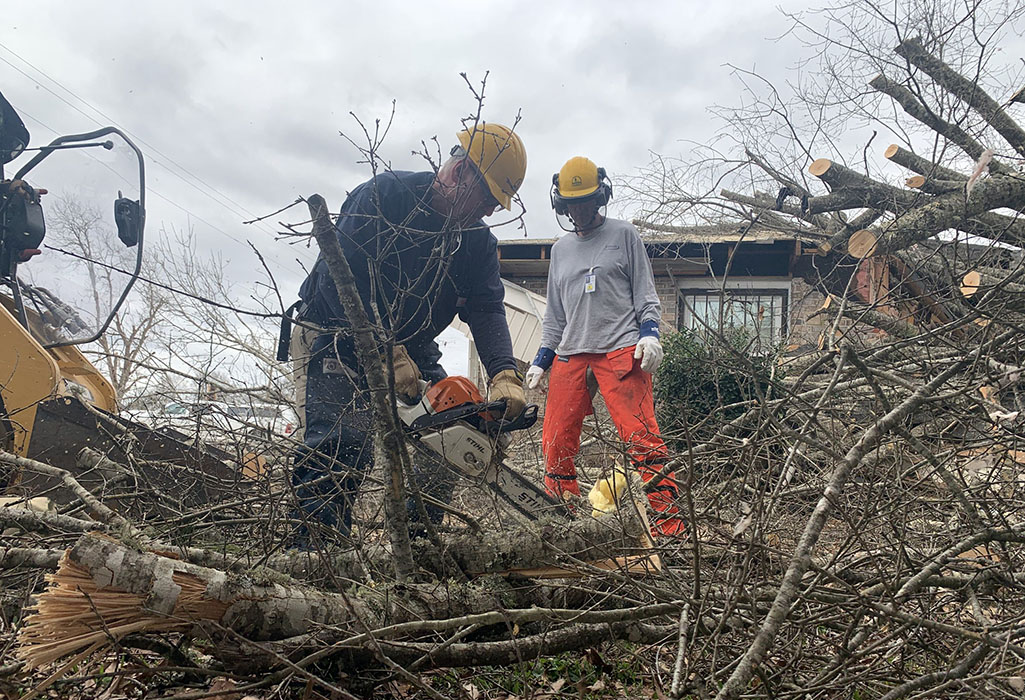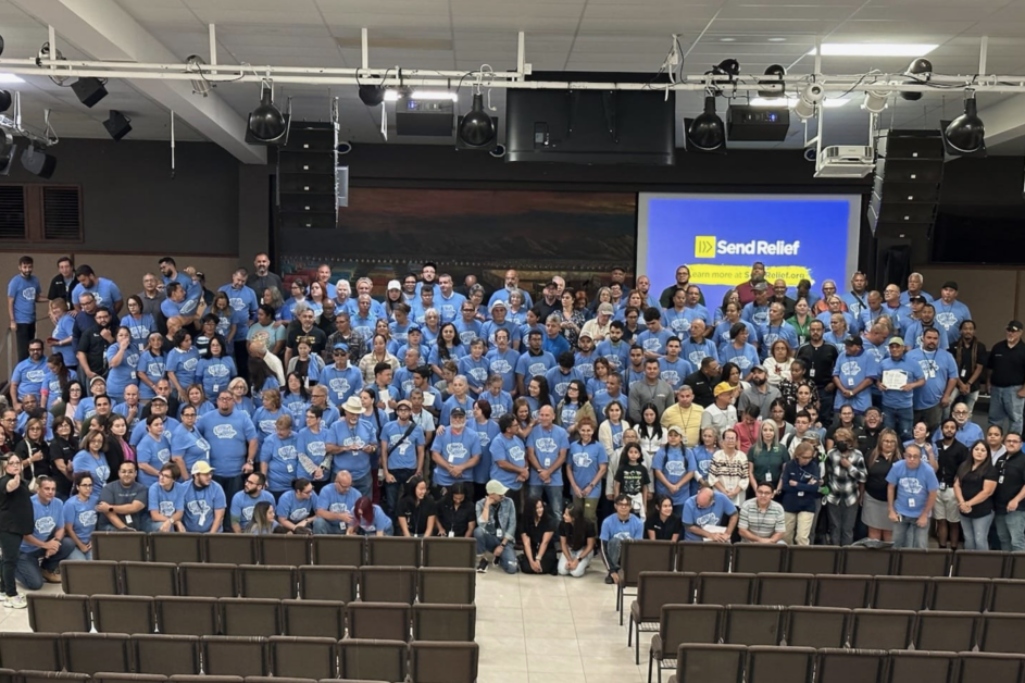
Disaster relief volunteers from Shelby Baptist Association clear trees in the yard of a Selma resident.
SELMA, Ala. – Guy Anderson’s downtown home has a big front porch, and he’s stood on it many times in the more than 25 years since he and his wife, Debbie, bought the historic 1880s property.
But he said the view from the porch has never looked like it did the afternoon of Jan. 12.
“I heard the siren, and I just kind of walked out onto the front steps and looked out at the sky,” Anderson said. “I didn’t ever see the tornado itself, but I knew the clouds were just boiling. I had never seen them look like that.”
His wife was at work, and he and their small dog hunkered down inside the house for the worst.
A path of devastation
“The whole thing was over in less than half a minute,” Anderson said. “The air pressure was changing, and I could hear glass breaking and doors opening and closing, awful kinds of explosive sounds.”
And when he came out to see the damage, the whole top of his house was gone – the tornado had ripped it off and dropped it in the backyard completely intact.
The Andersons’ house was one of many damaged by what the National Weather Service deemed a high-end EF2 tornado that carved a nearly 23-mile track through Dallas County and plowed right through the middle of Selma. It was one of nine confirmed tornadoes that tore through the central part of the state that day.
And within hours, the yellow shirt army of Alabama Baptist Disaster Relief volunteers arrived, Anderson said. “Since the moment they pulled up, when we’ve been at home, there has never ceased to be a stream of people coming through.”
The givers become the recipients
Those shirts are no stranger to Anderson. After he retired several years ago from Elkdale Baptist Church and was named minister of music emeritus there, he and his wife volunteered as disaster relief chaplains, walking through devastated neighborhoods in other places to share help and hope.
“It has a dramatically different feel to be the recipient,” he said. “We’ve spent all of our life and ministry being helpers and ministers. The adjustment is not losing the house, it’s trying to absorb the love being poured out on us.”
That love is being spread around all over the community by Alabama Baptist Disaster Relief volunteers working out of a temporary command center at Elkdale Baptist.
More than 300 job requests
John Hayes, the white hat leader in charge of efforts in Selma, said as of late Jan. 17, they had received 308 job requests, but the numbers often expand when they send out a team.
“Most of the time when we go to a location, every house in the area has damage, so we’re sending the teams out with blank sheets and just telling them to sign those homeowners up and work their jobs while they’re there,” Hayes said.
He believes teams will be working there several more weeks. At the moment, teams from Colbert-Lauderdale, Pickens, St. Clair, Birmingham Metro, Limestone, North Jefferson and Madison Baptist associations are on the ground working, with more teams on the way. A team from Tennessee has also been assisting.
Mark Wakefield, state disaster relief strategist, said teams “are so, so grateful to get to help out, and people are so, so grateful for the help.”
‘The world is watching what we do’
Anderson said the volunteer efforts are opening up a lot of conversations. One of his neighbors told him he’d been watching crews come and go from Anderson’s house, and he was amazed at how so many would give of their time to help. It gave Anderson the opportunity to talk with him about why Disaster Relief volunteers do what they do.
“I want to tell Mark Wakefield, ‘You already know this, but boy, the world is watching what we do,’” Anderson said. “I don’t know that we’ll change everything on earth, but it certainly makes a difference in a lot of individuals’ lives.”
Hayes said they’re already seeing that in Selma. In their first few days of working, teams saw seven people make decisions to follow Jesus as they’ve talked with Disaster Relief volunteers. Lee Tate, director of missions for West Central Baptist Association, visited all of them, and local churches will also follow up with them in the days to come.
Hayes said disaster relief work is “not about the number of trees we cut, it’s about the number of people [in whose lives] we make a difference.
“That’s the reason we’re here.”
(EDITOR’S NOTE – Grace Thornton writes for The Alabama Baptist.)


